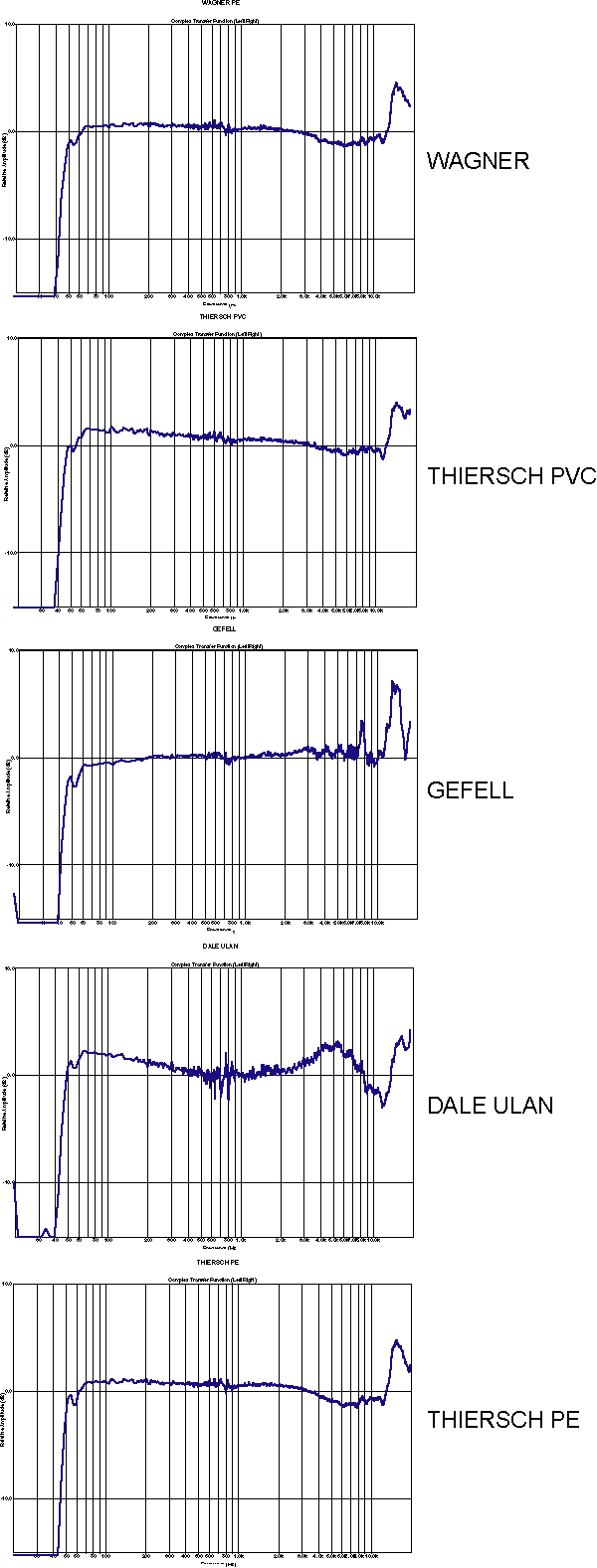In addition to measurements I am re-recording identical, self recorded HQ audio signals that I play back over a mastering grade speaker system in my acoustically treated/optimized control room using different mics and build configurations in identical setups (height, axis/angle, distance) to select my build's components. I consider this to be much more insightful (is that a word?) for me as a sound engineer/producer and musician than any measurement I know of.
The problem with real acoustic performance miking/recording comparisons on the web is, that they are never standardized in terms of mic positioning, performance differences, (unknown?) circuit/component/cabling/preamp/ADC differences and so they are never repeatable. Forget about the classic we-put-5-mics-in-front-of-same-singer-approach: the inevitable different angles/distances/heights render the audio results unusable. The closest 0-degree-axis mic will usually sound best. Yay!
I am aware of the fact, that even the best speaker system doesn't generate sound the same way as a singer/instrument would. But as my results are based on a standardized setup, I can much better draw helpful real-life conclusions. I know I have used expensive high-end equipment, but I can imagine that it might not even be such a bad idea to replicate my notion with whatever-you-own equipment, because it should be able to tell you pretty well, how differences in builds will be noticed within your own overall environment.
That's what I did to achieve this:
1. I recorded female and male vocals, whispering/speech, a viola and a Djembe with the most natural high-end front-end chain in my studio in 96kHz/24 Bit (Josephson C617 SDC, JZ pop filter, Vovox Sonorus direct-S cable, Gordon Electronics Model5 preamp, RME Octamic XTC ADC).
2. I chose a default distance to one of my Sky Audio Verdade speakers (KS digital DSP corrected B8 sub, 2 PSI AVAA active bass traps, SPL Performer amp), that is far away enough for any musical signal to sound "complete" while still being close enough to minimize room reflections and induce a noticeable proximity effect - like a real singer/instrument would. I ended up at precisely 30 cm between tweeter and capsule diaphragm at a well defined height. I then verified the linearity and checked the phase response of this position with a calibrated measurement mic (Sonarworks omni, REW). Levels were set in a way, that 1KHz sine presented @70 dB SPL created -18dB at the ADC output. This measurement served as reference to divide any testing mic measurement by and pretty much nulls out the effects of room and speaker this way.
3. I then recorded all pre-recorded audio signals through all mics* and test builds to compare to each other using a slightly higher leveling (1KHz sine@70dB SPL creating -16dB@ADC), because this seemed closer to levels I would use in an actual recording session.
*Microtech Gefell M930, SONY C100, Neumann U87, Neumann KM86, Warm Audio 47jr, AKG C414, Rode NTR, Josephson C617, U47 style build (M7, EF86) with Replica Microphones (RM) and Thiersch M7 (STW7 red line), Telefunken NOS EF86, EF806S and JJ EF86 tube, RM and Haufe BV08 transformer (to A.Grosser's specs), ERO MKT cap vs. Mundorf cap etc.
Here are some of my findings:
- testing my U47 style build (M7, EF86) the Haufe/Grosser BV08 transformer and the Thiersch mylar M7 sound superior to their Replica Microphone clones, but the differences are smaller than expected
- at first I could not distinguish between the JJ EF806S, NOS Telefunken EF86 and EF806S - later on I found the JJ to sound softer and "sweeter", while the Telefunken gave me a bit more "whack" and faster transient response
- my U47 style build blows away all other mics when it comes to female vocals and is great for any vocal, while newer capsule designs have more whack when it comes to drums (like M930/K47 style capsules).
- for the Viola, the Neumann KM86 is hard to beat
- the SONY C100 is the only modern low-noise mic, that comes close to that classic Thiersch M7/U47 sound, with a little less air/"satin" in the top end.
- at least when you have a decent room (or you are using an absorbing rear screen/filter): close miking in Omni rocks: rounder, fuller, less strained, don't need proximity bass for most of the sources. My build sounds best in omni or hypercardioid and so do most of the other multi pattern mics in the race (C100, U87, KM86).
- a frequency response graph doesn't tell you anything musically useful about a microphone; time-domain and distortion are much more relevant, but hard to measure and even harder to interpret (IMO a waste of time).
When I am done with all testing, I will structure and render my audio to share with the community, if you like.
Cheers!
Ro



